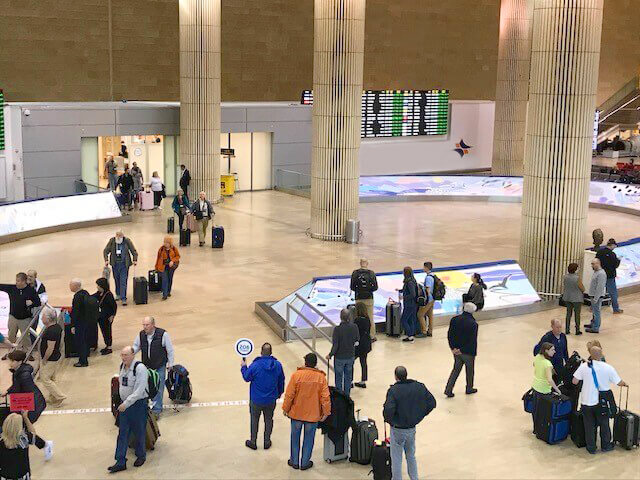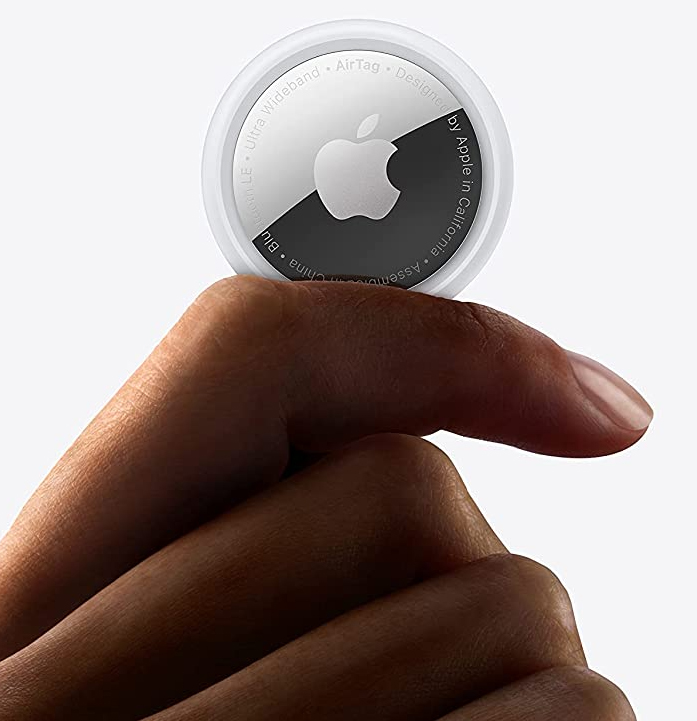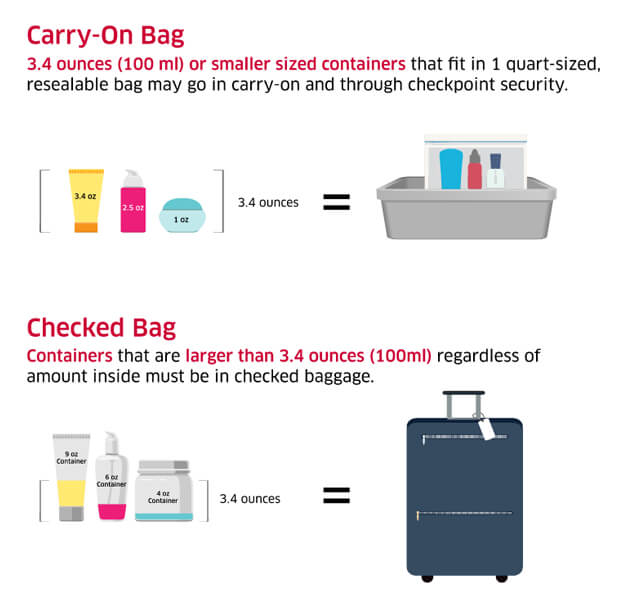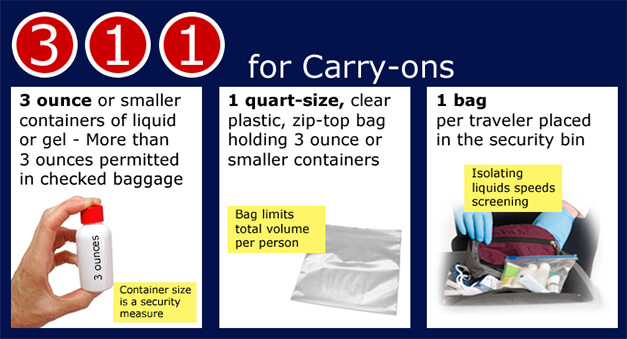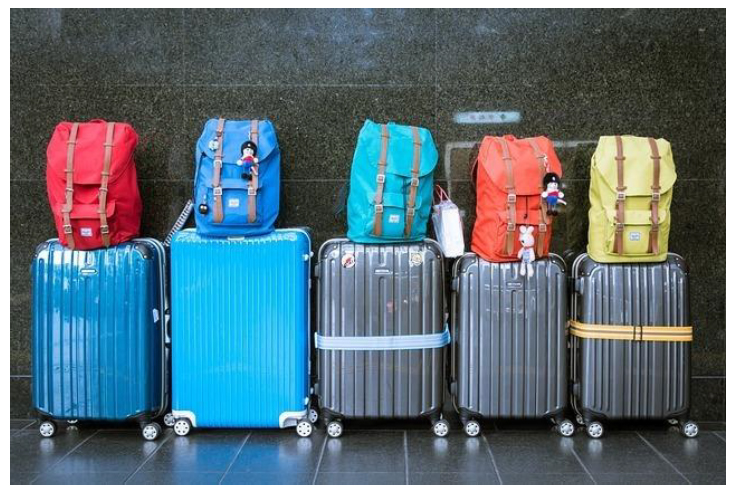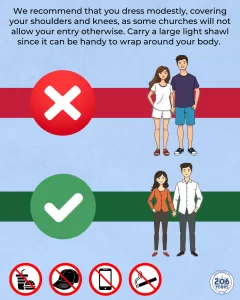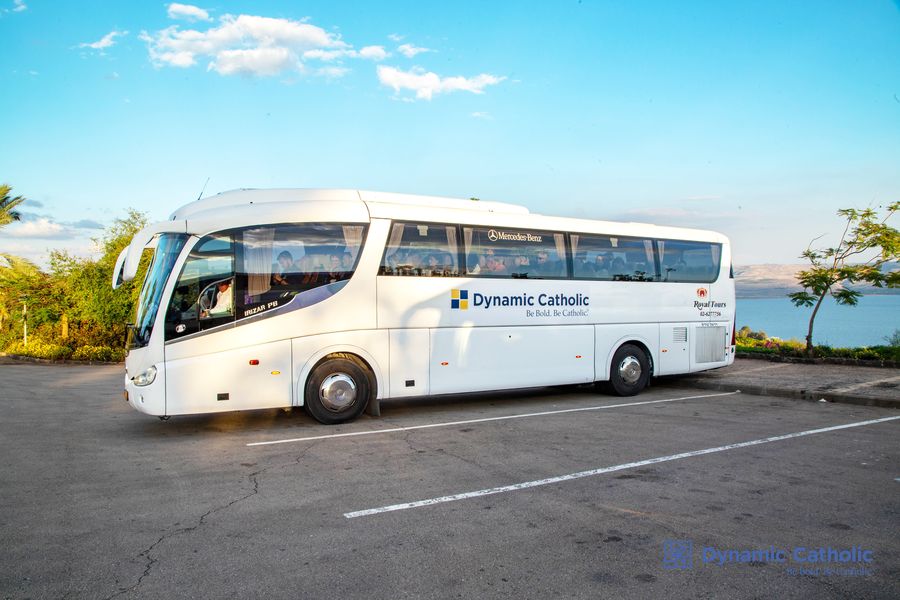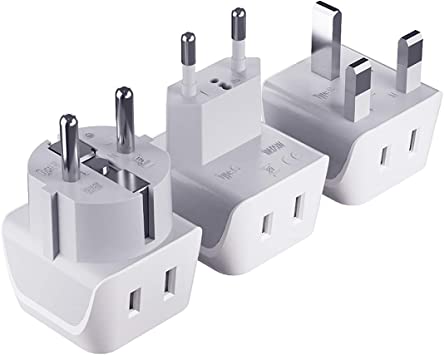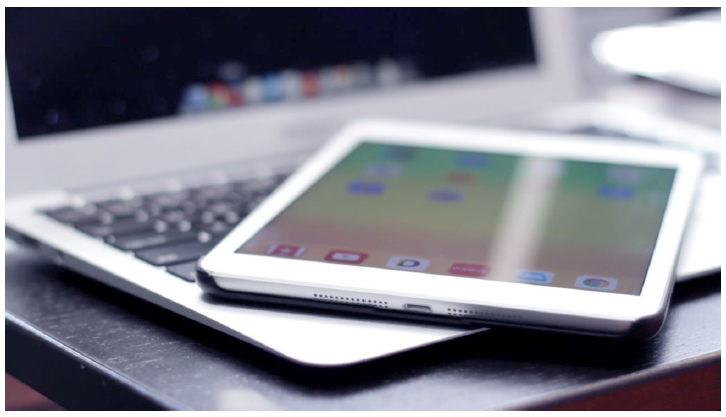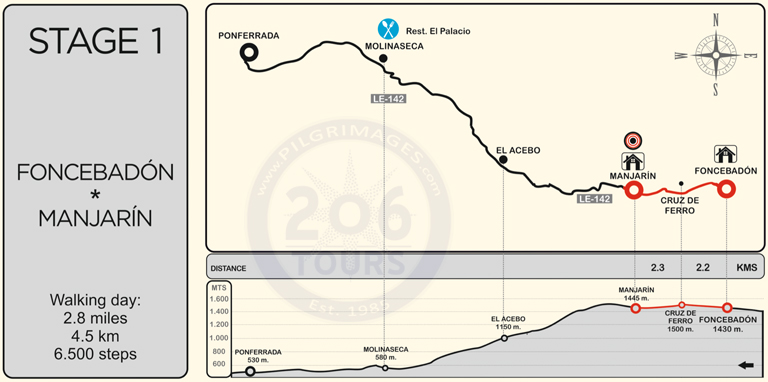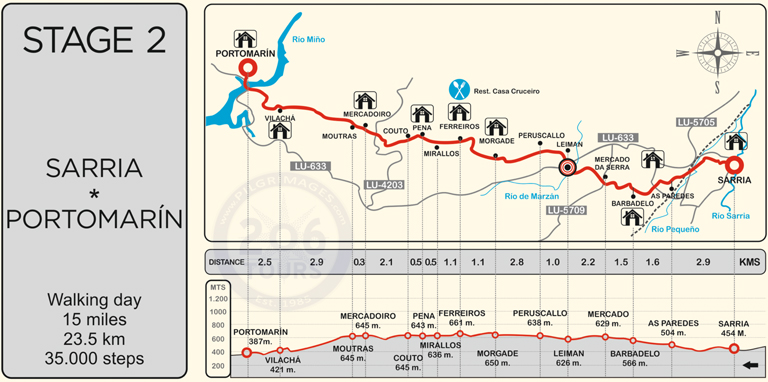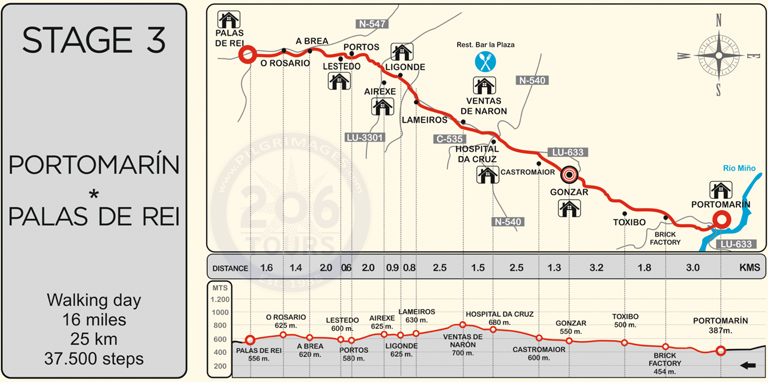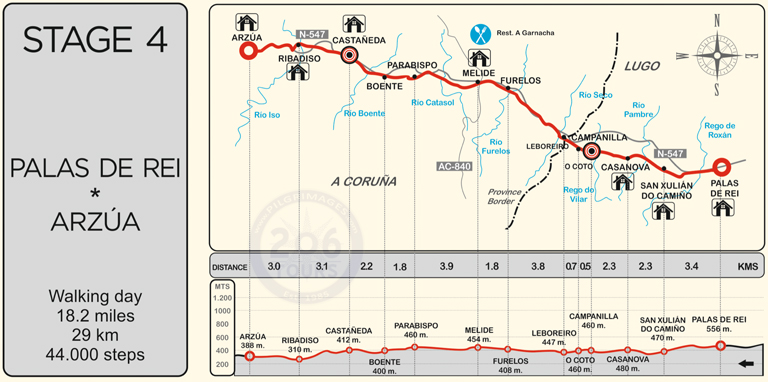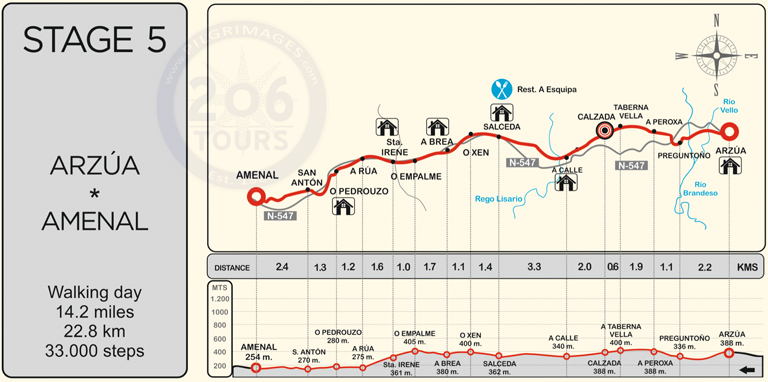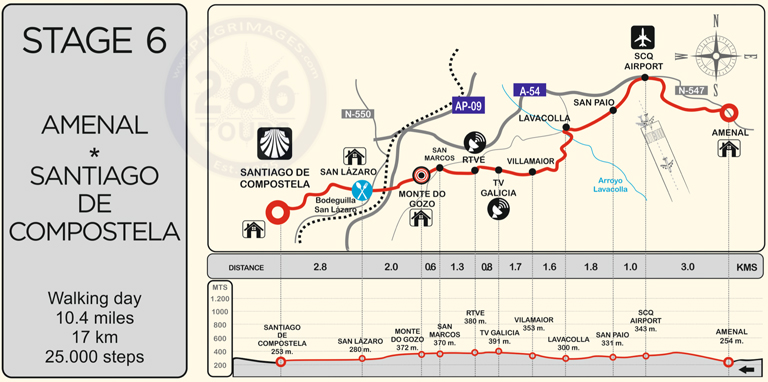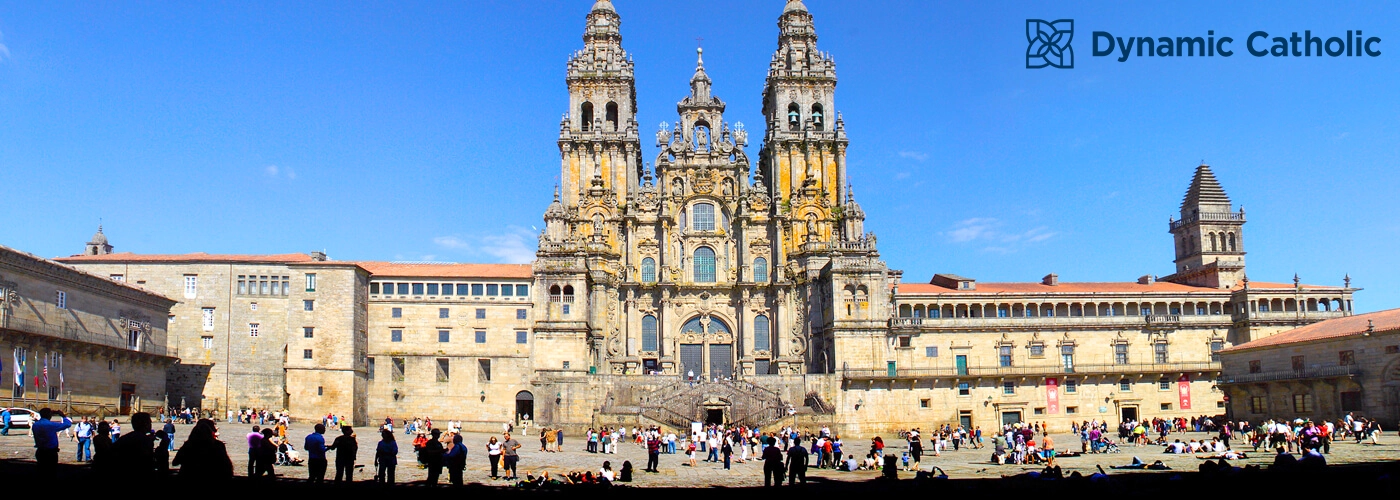
What To Know Before You Go To
El Camino – The Way of St. James
-
About El Camino – The Way of St. James
Welcome to 206 Tours – The Way of St. James or El Camino Escorted Walking Pilgrimage
The Camino de Santiago is the most famous, and sacred, pilgrimage walk in the world. Millions of people have traveled to the ancient burial site of St. James the Apostle for over 1000 years. Open your heart and mind to be responsive to new perspectives, ideas, cultures, etc. Some of us have dreamed of making this walk for many years, imagining breathing in the beauty and awakening the soul. Finally you have the chance to experience the incredible journey. As soon as you have decided to make the El Camino pilgrimage, please work on preparing physically and spiritually, so that, before you depart, you are accustomed to walking 20 miles with not too much discomfort.
We do not include much free time for recreation, such as shopping, because we will be busy walking as well as enjoying several comprehensive tours. However, if you are tired or feel like doing only partial walk, you are free to take time and relax. If you feel you are unable to keep up with the pace of the tour, manage the terrain, or would like free time for your own interests, you are welcome to refrain from participating in any aspects of the program you desire simply inform your guide and they will get you to our next destination (no refund can be issued for any part of the tour you choose not to participate in).
One of the highlights of completing El Camino is witnessing the Botafumeiro in action at the Cathedral de Santiago. 206 Tours is committed to providing this experience for all our Camino pilgrims. That is why 206 Tours makes a generous donation to the Cathedral every time one of our Camino Pilgrimage groups are present at the Pilgrims’ Mass. This donation is what allows the Botafumeiro to operate and the experience of seeing it swinging across this magnificent Church is a memory you are certain to cherish forever.
It is important to note that the amount of walking is significant, and the terrain varies greatly throughout the tour. For this reason, we would like to offer you some recommendations, and we ask you sincerely read our tips carefully.
-
How to prepare for your Pilgrimage
Thanks for visiting our Know Before You Go resources! Our Mission at 206 Tours is to take care of all arrangements so that you can focus on preparing spiritually for a holy Pilgrimage! The information below details everything you need to know before your pilgrimage!
Do I need to know the local language?
Your Guide/Tour Escort will conduct the pilgrimage in English but is multilingual and able to communicate locally should you need any assistance.How can I prepare for my pilgrimage?
- Prepare Physically: If you are not accustomed to physical activity, begin walking 1-2 times a day. We recommend that pilgrims be able to walk up to 20 miles easily.
- Prepare Spiritually: Attend daily Mass if possible, or spend quiet time in Adoration. You can also begin (or continue) to pray the Rosary daily.
How should I raise questions/concerns during my pilgrimage?
If you need help during your pilgrimage, your guide is there to assist you at any time! Please communicate any problems, concerns, or complaints directly to your tour escort immediately so that we can best address your needs. Your guide is at your disposal for any issues, such as hotel accommodations, meals, transportation, etc. There is very little that can be done to rectify a concern once you return home – most concerns can be dealt with swiftly once brought to your guide’s attention. If you feel your tour guide does not adequately address your concern, please contact our office at sales@206tours.com -
General Info About Your Documents, Flights, Arrival & Travel
Please visit www.tsa.gov for the most up to date travel restrictions
Passports and Visas
PLEASE NOTE: A valid passport is required, and it must be valid at least 6 months after your return date (for some countries 3 months). It is the traveler’s sole responsibility to obtain, when necessary, the appropriate valid travel documents. All are advised to check with the appropriate government authority in each country visited to determine the necessary documents. At times, Hotel or Cruise Vessel May require to hold your passport. When, and if, a visa or visa waiver is required, it is your responsibility to obtain one. 206 Tours, owner, agent, or employees cannot be held liable for clients not having proper passports, visa, visa waiver, or other travel documents. Cancellations due to a lack of appropriate documents will incur usual penalties. A Passport Card is not useful for International Air Travel. Attempting to use this instead of a Passport Book will result in a denial of boarding by the airlines and entry by the legal authorities.
While most countries do not require visas for American travelers, some may. You can find out what countries require a visa by using the U.S. State Department’s destination search tool:
Enter your country into the search bar. Then, on the country’s information page, you will find entry, exit, and visa requirements. You will also find travel advisories and a link to the country’s embassy.
Emergency Telephone Numbers in Spain:
Emergency Police: 112
Ambulance/Medical: 122
Emergency/Fire: 112European General Emergency Code:
112Airport Check-In
Walk over to the designated airline check in counter. You must personally present your passport and your own luggage.
The agent will locate your reservation, give you the boarding pass and luggage slip is being sent via same flights.
(Unlike domestic flights you will not be able to print your boarding passes for international flights at home)
Ensure that your luggage is checked through all the way through to your final destination.
This will eliminate the need to claim your luggage between flights and re-check in before your connecting flight.
Flight Changes/ Delays/ Cancellations: If your flight is experiencing a long delay, or a cancellation, do not panic, go to the airline customer service counter, or contact the airline, ask to be rebooked to another flight/airline, ask for meals or a hotel room.
Be Persistent. Speak with the kindest tone, but keep trying, do not just take “no” for an answer. Airlines will rebook you on the next flight to your final destination. Be Nice! Never yell or be rude to staff, as they are going through a lot and it is not their fault. You can take it out on CEO’s by writing a letter to particular airline’ customer service.
How early should I arrive at the airport?
- Domestic Travel: Arrive at least two (2) hours prior to flight
- International Travel: Arrive at least three (3) hours prior to flight
Airline Connections
Where is my flight itinerary?
206 Tours provides you with your flight itinerary via email. This itinerary shows the airline, flight number, departure and arrival times, and seat/meal information. It is recommended to keep the printed copy with you or download the itinerary to your smartphone for easy reference.How are my flights arranged?
206 Tours books airline reservations in accordance with TSA rules, regulations & routings. We do our utmost to provide the most convenient flight schedule available. All pilgrims will be traveling independently on all flights.Why does my plane reservation say one airline, but the plane reads another?
Many airlines participate in special agreements to share aircrafts. For example, your ticket may show one United Airlines as your carrier even though you are actually seated on a Lufthansa plane. These are called “Code Share” flights and your itinerary will show this with the message: “Flight Operated by (Airline)”.Who decides the connection time at airports?
The airlines determine the minimum connection time required to transfer from one gate to another for a connecting flight. 206 Tours does our best to provide ample connection time based on available flights and in accordance with our scheduled group transfers.Flight Delays & Arrival Transfers
What if my flight is delayed or canceled?
If your flight is delayed or canceled, you must work DIRECTLY with the airline agents at the airport to arrange for alternate flights or protection. Once you check-in for your flights, 206 Tours can no longer make any adjustments to your flight itinerary. After check-in changes can only be made by the airlines.In this scenario, please be persistent with the airline agent you are working with to rebook. Keep in mind that the situation is not the agent’s fault and try your best to remain calm and courteous to receive speedy assistance. The airlines are not required to offer reimbursement for personal expense of overnights when delays/cancellations occur due to weather. If you find that you’re unable to receive adequate assistance from airline personnel, please contact the 206 Tours emergency line and we will do all we can to assist remotely.
TIP: Once the airlines have rebooked you, text/call your guide to advise them of your new arrival time so transfer arrangements can be adjusted. (Your guide’s phone number can be found in the digital confirmation emailed to you by your account manager.)
What if I miss the group transfer upon arrival?
If you miss your group transfer due to flight delay, missed connection, or another reason, you may:- Take a taxi to the hotel at your own expense
- Contact your guide and ask for 206 Tours to arrange a private transfer at an additional cost
*Be sure to obtain a receipt of your transportation – upon returning home, you may wish to file a claim to seek reimbursement for the cost if the reason for missing the transfer was due to airline problems.
What if I want to make a last-minute change to my ticket?
If you would like to make changes to your airline ticket once it has been issued, you MUST work DIRECTLY with the airlines. You will incur additional costs – a minimum of $400 per person, for such changes.Arrival Procedure
What do I do when my flight lands?
After deplaning, you will go through customs and proceed to baggage claim – the location will be displayed on a screen noting your flight number. Retrieve your luggage from the conveyor carousel and proceed to the Arrival Hall by following signs that say “Exit” or “Arrivals Hall”.Look for the “Dynamic Catholic” Sign!
In the Arrival Hall, you will be greeted by a Dynamic Catholic representative holding a “Dynamic Catholic” sign. They will escort you to your hotel where you will check-in and have time to refresh before meeting the rest of the group later in the day.Nametag & Lanyard
- It’s Important to Wear Your Nametag & Lanyard during your pilgrimage
- It will help your guide to recognize you, upon your arrival at the airport or in the crowds;
- for being allowed into a restaurant, specifically reserved section for Dynamic Catholic;
- or to be allowed entrance into a site such as church for Mass or museum.
- It’s also a safety measure for our bus driver to recognize you when entering the bus.
- Dynamic Catholic flight bag is also helpful, but not mandatory.
TIP: Make sure to wear your Dynamic Catholic Lanyard, Nametag, and Bag so that the tour escort can identify you.
Lost Luggage
If your luggage is missing, proceed to the Baggage Office in the Airport Terminal to complete a “Missing Luggage Form”. Please make sure to save all paperwork and tracking information given to you by the Airlines. Upon locating your baggage, the airlines will bring your luggage to your Hotel. It is important that you provide them with the correct address and dates that you will be at your hotels (noted in your Digital Confirmation.) You may also provide the phone number of your Guide, also noted in the Digital Confirmation. If your baggage is delayed for over 24 hours, and you purchased insurance, you may submit a claim upon your return to the US (only applicable to passengers that purchased Travel insurance through 206 Tours).
*206 Tours strongly suggests that Pilgrims carry one change of clothes and medications in carry-on luggage.Apple AirTags
As you plan your travel, consider integrating Apple AirTags into your packing checklist. These compact, coin-sized devices act as personal tracking systems, offering a reliable solution to keep tabs on your luggage. Leveraging Apple’s vast Find My network, AirTags allow you to trace your belongings right from your iPhone, iPad, or Mac. They’re straightforward to use: simply attach an AirTag to your bag, and voila, your luggage is now traceable on a global scale. The device’s precision finding feature also provides visual and haptic feedback to guide you right to your misplaced or lost item, a feature especially useful in busy airports or hotels.
Before you embark on your journey, it’s essential to familiarize yourself with the functionality and limitations of the AirTags. While they offer an innovative way to track your belongings, they rely on being in range of devices in the Find My network to relay their location. This means their effectiveness could be limited in areas with low Apple device density or poor internet connectivity. Also, remember that AirTags are designed for tracking objects, not people or pets. A built-in anti-stalking feature notifies individuals if an unknown AirTag is moving with them, so using AirTags for unintended purposes could lead to unintended alerts. With responsible use, Apple AirTags can add a layer of security and peace of mind to your travel experience.
*Subject to change
How to Overcome Jet Lag
Traveling through time zones affects people differently – some get quite tired. Here are some suggestions that may help you beat jet lag.
- Pack at least two days ahead of time
- Make sure to go to bed earlier than usual the night prior to travel
- Hydrate! Drink more water than normal to avoid dehydration on the flight
- Try to sleep a bit on the plane!
- Think in “Local Time” – reset your watch to the local time of your destination
- Stay busy: When you arrive at your destination, try to stay busy and go to bed at an appropriate time that night. Pacing is key!
- Eat fresh, healthy foods like vegetables, fruits, and coffee to keep you alert. Heavy, greasy, or high-carb meals will make you tired.
- Exercise – take twenty (20) minute walk in the morning, stretch before getting on the plane, and get up and walk during the flight. Moving gets your blood flowing and wakes up your body.
- On the day of return, get out of bed earlier than normal, hydrate, and try to get sleep on the flight home.
Baggage Regulations
How much luggage can I bring?
Your Pilgrimage Includes:One (1) piece of Checked Luggage
One (1) Carry-On Luggage
One (1) Personal Item
Checked luggage
Is the bag containing the bulk of your belongings – upon check-in at the airport, this is the bag you give the agent that gets stored underneath the plane.Size Allowance:
Length + Width + Height cannot exceed 50lbs & 62 inches/158cm
Economy Class: One (1) Checked Bag at 50 lbs/23kg
Business Class: Two (2) Checked Bags at 75 lbs/32kg
TIP: If you cannot pick it up, it is too heavy!Carry-on Luggage
Is the bag you bring on the plane with you – this must fit in the overhead bin. Airlines are strict about the size of a carry-on bag – if it is too large or overhead, you will be subject to fees. Always ensure that you take personal possessions such as your passport, wallet, and medications with you at all times. Do not pack these or other items that you cannot be without, in your carry-on luggage. It is possible, (sold-out flights and small aircraft) that the airline may ask you to check in your carry-on.
Size Allowance:
One (1) Piece – Length + Width + Height cannot exceed 42 inches/106 cm & 17 lbs (8kg)
Personal Item
One (1) personal item is permitted in addition to your carry-on bag – this can be a laptop, iPad, book, small pocketbook, etc.
TIP: Our 206 Tours Bag meets the measurements. It will also make it easy for the Guide/Driver to spot you in the Arrival Hall.TIP: Don’t lose your luggage. Airlines chaos has dominated the news this year. Take control of tracking your luggage via luggage trackers. Consider buying a smart travel device, prices start at $17. https://www.bestproducts.com/tech/gadgets/g40640083/best-luggage-trackers/
Carry-on Bags: 3 – 1 – 1 Liquids Rule
Liquids, gels, aerosols, creams, and pastes must be:- 3.4 oz bottle or less (100ml)
- All bottles must fit into one (1) quart-sized, clear, plastic, zip-top bag.
- Gallon-size bags or fold-over sandwich bags are not allowed
- 1 Bag per passenger screened on its own
For additional information or clarification please visit: www.faa.gov
Checked Bags:
Containers of any size are allowed in Checked Bags. Any container larger than 3.4 oz (100ml) must be in checked baggage, regardless of the amount of product inside.Exceptions to the Rule:
The following exceptions are permitted to exceed 3 oz- Baby formula, breast milk, juice for infants/toddlers
- Prescriptions and over-the-counter medications including eye drops and saline
- Water, juice, or liquid nutrition or gels for passengers with a doctor’s note
- Products for medical/cosmetic reasons such as mastectomy products, prosthetic breasts, bras containing gels/liquids
- Gels/frozen liquids are required to keep medical items cool
Declare the above items for inspection at the security checkpoint – the TSA officers may need to open items for additional screenings.
Any liquids purchased inside the airport after security are allowed on the airplane. If you have a layover and are re-screened, the liquid rule will apply.
Personal Items Carry-on Checked All Make-up – You are allowed to carry any liquid/gel/cream makeup item provided that the container is up to 3 oz., as per the 3-1-1 rule. *mascara, chapstick, lip gloss, etc are all considered liquids. Yes Yes Safety Razors – includes disposable razors Yes Yes Saline Solution – You are allowed to carry up to 3 oz., as per the 3-1-1 rule. Volumes greater must be declared to the Security Officer. Yes Yes Tweezers, Scissors, Nail Clippers – plastic or metal with blunt tips or metal with pointed tips and blades shorter than four inches in length. Yes Yes Shampoos & Conditioners – must be in 3 oz. or smaller container inside your 1 qt Ziploc bag Yes Yes Toothpaste – 3 oz. or smaller container inside your 1 qt Ziploc bag Yes Yes Umbrellas– allowed in Carry-On baggage once they have been inspected to ensure that prohibited items are not concealed. Yes Yes Walking Canes – allowed in Carry-On baggage once they have been inspected to ensure that prohibited items are not concealed. Yes Yes Electronics Carry-on Checked Camera Equipment – the Checked Baggage Screening Equipment will damage undeveloped film in camera equipment. We recommend that you pack undeveloped film in your Carry-On baggage. Yes Yes Laptops, Smartphones & I-Pads Yes Yes Food & Drinks Carry-on Checked Beverages – from Home or purchased before reaching the Security Checkpoint in containers LARGER than 3 oz. No Yes Beverages – from Home or purchased before reaching the Security Checkpoint in a 3 oz. or smaller container and in your quart-size bag Yes Yes Beverages – purchased after Security Screening Yes Yes Medication, Baby Formula/Food, Breast Milk, & Juice – allowed in reasonable quantities exceeding 3 oz and are not required to be in the zip-top bag. Declare these items for inspection at the checkpoint Yes Yes Canned or Jarred Goods – such as soup, sauces, peanut butter, fruits, vegetables and jellies (3 oz. or smaller container) Yes Yes Cheese – in pressurized containers (3 oz. or smaller container) Yes Yes Duty-Free Alcohol and other items (some restrictions apply) Yes Yes -
Currency & Money
Currency
The Euro (EUR) is the currency of Spain, though the US dollar is widely accepted. For most current exchange rates please visit www.xe.com.
Money
Bring small bills
Bring €20 cash in €1 or €2 Coins
Bring €50 cash in €5 BillsFor bathroom stops, to buy a candle, or to leave donations at churches. If you bring high denominations its hard to get change.
Where can I exchange money?
- Airports (there will be a convenience fee)
- Major Boulevards in destination (there will be a small exchange fee)
- Your Bank – Visit your bank ahead of travel for the best rate
- ATM Machine – while abroad, it is the more practical, and cost-effective, option. Utilizing your ATM card or Debit Card, you can also get cash advances on your credit card at an ATM, but there will be high fees.
Can I use my credit card abroad?
Yes! We highly recommend using your Credit Card as it offers convenience, security (you can cancel them if they are lost!), and reasonable exchange rates. Visa and Mastercard are the best options, as they are accepted in most stores or restaurants. American Express and Discover are not widely accepted in Europe. Your guide can also advise you where the ATM machines with the lowest fees are located.IMPORTANT: Before you leave, inform your bank and credit card companies that you will be traveling abroad so they do not flag, block, or suspend your account due to international transactions.
NOTE: For increased security, European banks now issue debit and credit cards that carry an embedded chip. As a part of their anti-fraud measures, you are seldom asked to give a store/restaurant employee your card for them to swipe. Instead, if you are at a restaurant on your own, your waiter will bring a portable card reader to your table with the amount of your bill already entered. You cannot add a tip to the total, so leave a small tip in cash instead. Your card is swiped, and you will be asked to OK the total and enter a PIN. The PIN for this is not the cash back PIN. If you have an older US credit/debit card without a chip, you may not have a PIN. In the case that you do not have a PIN or forget it, just hit the OK again with no PIN entered. It usually works.
How Much Cash-Money Should I Bring?
This is totally subjective based on how much you’d like to spend on souvenirs and meals not included, usually lunch is the only meal that is not included.We generally recommend you bring at least:
El Camino = 200 EUR
per person or that you get it upon arrival.
Cash machines are available throughout your itinerary, and most places accept credit cards.TIP: Try to get about:
10 – 15 Euros in small bills to light a candle, or bathroom stops for El Camino.
U.S. Customs
U.S. citizens who have been in a foreign country for more than two days may return to the United States with up to $800 worth of merchandise duty-free. For those who wish to bring more home with them, a flat rate of 3% duty is levied on the next $1,000 worth of purchases. It’s a good idea to retain the receipts from your purchases should they be requested by a Customs Inspector upon your return to the United States. For details visit the U.S. Customs and Border Protection website http://www.cbp.gov/xp/cgov/travel.
Value Added Tax (VAT) Refund (In Spain)
All prices in Spain include 21% VAT. On each purchase exceeding 90,16 EUR (including V.A.T.), the V.A.T. will be refunded upon presentation of the special invoice at the port of departure. In order to acquire the refund, the following procedure must be obtained:
1. Look for the “tax refund” sticker on the business door or publications
2. Ask for a VAT refund invoice – the invoice must be an official Change Place document, which Is the official VAT refund broker in Spain.
3. At the airport VAT desk, show the original invoice, the green VAT tax form, and the goods you have purchased.
4. At the end of the procedure, you will receive a check drawn in your favor which may be cached on the same day.For additional information on the VAT refund http://en.wikipedia.org/wiki/VAT
-
Luggage & What to Pack
How much luggage can I bring?
Your Pilgrimage Includes:- One (1) piece of Checked Luggage
- One (1) Carry-On Luggage
- One (1) Personal Item
Checked luggage: is the bag containing the bulk of your belongings – upon check-in at the airport, this is the bag you give the agent that gets stored underneath the plane.
- Size Allowance: Checked Luggage
- Length + Width + Height cannot exceed 50lbs & 62 inches/158cm
- Economy Class: One (1) Checked Bag at 50 lbs/23kg
- Business Class: Two (2) Checked Bags at 75 lbs/32kg
TIP: If you cannot pick it up, it is too heavy!
Carry-on Luggage is the bag you bring on the plane with you – this must fit in the overhead bin. Airlines are strict about the size of a carry-on bag – if it is too large or overhead, you will be subject to fees. Always ensure that you take personal possessions such as your passport, wallet and medications with you at all times. Do not pack these or other items that you cannot be without, in your carry-on luggage. It is possible, (sold-out flights and small aircrafts) that airline may ask you to check in your carry-on.
- Size Allowance: Carry-on Bag
- One (1) Piece – Length + Width + Height cannot exceed 42 inches/106 cm & 17 lbs (8kg)
TIP: Our 206 Tours Bag meets the measurements. It will also make it easy for the Guide/Driver to spot you in the Arrival Hall.
TIP: Don’t lose your luggage. Airlines chaos has dominated news this year. Take control of tracking your luggage via luggage trackers. Consider buying a smart travel device, price start at $17.
https://www.bestproducts.com/tech/gadgets/g40640083/best-luggage-trackers/A Personal Item is permitted in addition to your carry-on bag – this can be a laptop, iPad, book, small pocketbook, etc.
Medical Equipment
Wheelchair Assistance (Within Airports)
During registration, pilgrims are offered several selections for wheelchair requests, including gate-to-gate assistance, or all the way through to the seat. If you made a wheelchair request, 206 Tours will secure this service for you and it will be included on your airline record – an airport representative will meet you at the check-in desk to assist you.CPAP Machines
Travelers bringing a CPAP machine should contact the airlines ahead of travel. (Your airline will be shown on flight itinerary provided digitally via email and within your Travel Documents).Oxygen Tanks
If you are traveling with oxygen, you must visit your doctor ahead of travel to obtain the necessary paperwork. Only FAA-approved tanks can be checked, talk to your doctor about Department of Transportation Approved battery-powered oxygen concentrators which are permitted on flights.Car Seats & Strollers
Most airlines allow car seats and strollers for families traveling with young children at no additional cost, however some have restrictions, so it is advisable to call the airlines ahead and ask.What to Pack
We understand that packing can be challenging. Here are some helpful tips to help.
IMPORTANT: Carry On You Anything that You Cannot Live Without – That includes your passport or your heart medication. There are times, then airline might demand that, even your small carryon, be checked in.
What items can I leave at home?
Formal Attire and very expensive jewelry.What type of clothing should I pack?
Pack smartly by reviewing the itinerary activities and checking the expected weather. Days are packed with sightseeing and walking throughout, so comfortable clothing and sneakers are best.
Suggested Clothing:- Bottoms: Comfortable pants or shorts/skirts no shorter than knee length
- Tops: Long or short sleeve tees, blouses, button-downs, polos, or sweaters that are seasonally appropriate. Shoulders should be covered.
- Layers: Undershirts, light sweaters or cardigans for layering are great for cooler mornings or evenings
- Jacket: A weatherproof rain jacket is great to have (if traveling October through March)
- Socks, undergarments, pajamas, belt, hat, scarf (large light fabric scarf if needed to cover shoulders/knees), sunglasses, swimsuits (for swimming in Dead Sea) etc.
- Accessories: wallet, purse, etc.
*If you forgot something at home, you can buy it on the Trip. Ask your Guide.
TIP: Count the number of days you are traveling. You can always wear Pants/Shirts twice.
Dynamic Catholic uses First-Class Four-Star Hotels which include the necessities and provide pillows blankets, shampoo, soap, towels, Wi-Fi, hair dryers and more.
Suggested Toiletries:
- Travel size deodorant, toothpaste, shampoo & conditioner, body wash/soap, lotion, gel, hair spray, shaving cream, mouth wash, sunscreen, etc.
- Toothbrush, comb, nail clippers, razors etc.
- Travel Size Kleenex
- Pen – (to complete Custom Forms on Plane)
- Band-Aids
- Chapstick
- Washcloths
- Over-the-counter medications / Pharmacy Items (if applicable to you), Dramamine, Aspirin/Advil etc.., Antibiotic Cream, Laxative and Imodium, Tums/ Pepto Bismol tablets, Sominex or sleep aid and Allergy/Cold Medicine
Should I pack clothes in my carry-on bag?
Absolutely! Pack at least one change of clothes, socks, and undergarments in your carry-on bag in case your baggage is delayed or lost. You may wish to bring toothpaste, a toothbrush, and deodorant to refresh during your travels as well.What should I wear on the plane?
Wear comfortable loose-fitting clothes for your flights. Your feet may swell due to altitude, so wear flexible shoes and bring a pair of slippers or socks.What electronics should I bring?
- Cellphone and charger (consider a portable Power Bank too.)
- Camera and charger (unless using Camera on Phone)
- Small Flashlight
The attire during the course of your journey is conservative and comfortable. Ensure to cover your shoulders, chest, and your legs at least two inches below your knees for entrance to holysites (which will be visited daily.) and to respect local customs. It is not necessary for women to cover their heads or faces. There is no need for formal attire for men or women at any time during the course of the tour. Comfort and adaptability are the most important factors in determining what to pack. During your flight, you will want to wear loose-fitting clothes and pack a pair of slippers or socks to wear for the flight. Make sure your shoes are lace-up or flexible, as your feet may swell due to the flight.
For Winter, Early Spring, and Late Fall: Be sure to back a warm jacket, a hat, scarf, and gloves.
For Summer, Late Spring, and Late Summer: Bring a sunhat and loose-fitting clothing. Don’t forget a lightweight sweater for the evenings as some places may be a little cooler than others. A note about summer attire; shorts (or mini skirts) and bare shoulders are considered inappropriate at some religious sites. For men, shorts that can be transformed by zippers into trousers may be convenient.We strongly recommend that women bring a shall or sarong which can be placed conveniently in their day bag, so that they may drape their shoulders, or tie it around their waists in the more religious sites.
Other Suggested Items to Bring
Will there be time to shop?
Very limited time, towards the end of your pilgrimage has been set aside during your pilgrimage for shopping! The reason it has been pre-planned is that, with so much sightseeing, a pace must be kept in order to see all sites. Ask your Tour Escort local specialty items. Small, light items that you can easily carry home make splendid souvenirs & gifts. Don’t forget to buy something nice for yourself too.Remember, when shopping – use your credit card, that will guarantee your product, and if anything goes wrong you can claim accordingly.
Shops at a Shrine/Church/Basilica: Cash Only
Some Holy sites have small gift shops run by clergy – at these shops, all proceeds are donated to the upkeep of the site – but often credit cards are not accepted. For these reasons, be sure to have cash handy.What if I purchase something that is big/heavy/fragile?
Arrangements can be made at the shop or hotel to have items shipped to your home.What should I avoid when shopping abroad?
Always be aware of your personal belongings when shopping in crowded areas. Try not to take out your money/credit cards in public areas, unless at the time of making a purchase.Transportation
Transportation is by private motor coach:
You will be on the same bus from the time you arrive at the airport, until your transfer back to the airport for your return flights home. The duration of driving time between cities/countries can range extensively depending on your itinerary. Some days may include only short transfers on the bus from your hotel to the Shrines, Churches, Museums, Restaurants, or similar. Other days, you may drive a couple of hours to travel from one city to another. Depending on the itinerary and location of sites, your day may require up to 8 hours of driving – broken up by visits, Mass, etc. Regardless of the itinerary for the day, rest assured that the coach will stop for bathroom/stretch breaks (approximately every 2-3 hours), as well as a lunch stop.Is the motorcoach “Modern”?
Yes! All of our motorcoach buses are either brand new or a few years old. They have new upholstery, emergency and safety settings, seatbelts, USB chargers, and a cooler up front for water bottles.Does the motorcoach have a restroom?
No, due to local laws and concerns with chemicals, etc. Multiple stops have been planned out during each day for restroom use. If it is an emergency, just let your guide know, and they will be happy to advise you of the nearest restroom/or plan for a stop. Keep in mind that many of the Churches, Museums, and Restaurants along the way also have restrooms. -
Average Temperatures
City Jan Feb Mar Apr May Jun Jul Aug Sep Oct Nov Dec Avila Low 29 31 33 36 42 49 54 54 49 42 35 32 High 45 48 53 55 62 73 81 80 73 61 51 46 Barcelona Low 40 42 44 47 54 60 66 67 62 55 47 42 High 56 58 60 64 69 76 82 82 78 71 63 58 Garabandal Low 45 48 50 55 60 65 68 70 68 60 55 45 High 55 58 60 65 70 76 78 80 78 70 65 55 Madrid Low 37 39 42 45 51 59 65 65 59 50 43 39 High 50 54 60 64 71 80 88 87 79 66 56 50 Santiago De Compostella Low 36 36 42 46 52 61 67 66 60 50 42 37 High 51 55 61 67 74 84 92 91 82 69 59 51 -
About Europe & Travel Abroad
Language
The official language of Spain is Spanish, however English is widely spoken and many signs appear in English as well.
Useful Spanish Phrases
Along the journey, a common phrase is “Buen Camino”, (which means “good path”) is generally received as good luck and happy travelling”.
Must Know Travel Terms Common Spanish Phrases Phrase Pronunciation Hello Hola/Buenos días “oh-lah/bweh-nos dee-as” Goodbye Adiós “ah-dyos” Yes Sí “see” No No “noh” Please por favor “por fah-bor” Thank You Gracias “grah-thyas” Excuse Me Disculpe “dees-kool-peh” Do you speak English? Habla usted inglés? “ah-blah oo-steth een-gles” Can you help me? Me puede ayudar? “meh poo-eh-deh ah-yoo-dar” I don’t understand No entiendo “noh en-tyehn-doh” How much? Cuánto cuesta? “kwan-toh kwes-tah” Where is…? Dónde está…? “don-deh es-tah” bathroom / restaurant / hotel baño / restaurante / hotel “ban-yo / res-tau-ran-te / hotel” Taxi, please. Taxi, por favor “taxi por fah-bor” Where is the hospital? Dónde está el hospital? “don-deh es-tah el os-pee-tal” Hotels Accommodations
Hotels Accommodations (In Spain)
Hotel rooms may be smaller than you are used to based on American standards. All rooms are comfortably appointed with a private bathroom. Mini-bar items and access to paid TV channels are at your own expense. King size beds are rare in Europe, therefore couples should anticipate queen size beds in most hotels. Travelers sharing a room will have two twin beds in their hotel rooms. Many hotels use key cards to operate the room’s lighting system and/or the elevator. All hotels offer a hair dryer in the bathroom. Most hotels provide toiletries (shampoo, soap, lotion), if needed bring a supply of conditioner with you. It is not customary for hotels to provide wash cloths.Adapters, Converters, & Electricity
Will I need an adapter?
When traveling abroad, you will need to bring an adapter to use electric outlets. The voltage used is 220 volts AC, single phase 50 cycles (the U.S. uses 110/120 volts). The best option is to bring a universal travel adapter with dual USB ports. This will allow you to charge multiple things at once, while also being able to use the same adapter for multiple countries.Adapters are sold as Combos – 3-in-1
Will I need a Converters?
Converters are rarely needed as most electronics are built to convert the voltage. All hotels have hair dryers, so you would only need to bring a converter if you were bringing your own hair dryer or a curling iron/hair straightener (which are not necessary on a pilgrimage). If you have a laptop – check with the manufacturer. Newer models of most laptops and iPads have a converter built-in. Converter kits that include the entire range of plugs can be purchased online or in stores.Hotels
What type of hotels are we staying in?
Dynamic Catholic uses first-class four-star hotels throughout. These hotels have all the local amenities you come to expect at home. Hotel rooms may be smaller than typical American standards. All rooms are comfortably appointed with a private bathroom. Mini-bar items and access to paid TV channels are at your own expense. King-size beds are rare abroad, therefore, couples should anticipate queen-size beds in most hotels.Travelers sharing a room will have two (2) twin beds in their hotel room. Many hotels use key cards to operate the room’s lighting, electricity, and/or the elevator. Rooms will have large towels and hand towels. It is not customary for hotels to provide washcloths.
TIP: Feel free to look at the websites of the hotels listed on the pilgrimage website, flyer, or in your digital confirmation. There you can view pictures, videos, and specific notes about the properties.
How will porterage work at the hotels?
Do not worry about having to carry your luggage between the bus and your hotel room. Porterage of one (1) piece of luggage per person is included in the cost of your pilgrimage. The Porters will do their best to bring your luggage to you in a timely fashion upon checking into the hotel. At times there may be a short delay due to the size of the group arriving. To make it easier for porters to identify your luggage make sure your Dynamic Catholic luggage tag is clearly visible. If you prefer to bring your own luggage to the Hotel, please wait near the bus as the driver and porters unload the luggage for you to identify your baggage and bring it with you to your room.Cell Phones
Can I use my smartphone on the pilgrimage?
Yes, you can use your smartphone on the pilgrimage. Be sure to contact your service provider and inform them that you will be traveling overseas. Most providers offer an “International Plan” that you may sign up for. This will allow you to make calls to the United States while you are out of the country. Some providers offer a plan known as a “Passport Plan” where you pay a flat fee per day and allow you to then use your phone normally without roaming or data fees. With this plan, you will be able to utilize calling and texting features as well as apps that allow you to call home for Free while utilizing WiFi.
*Refrain from using Hotel Phones. They are available for convenience but cost substantially more than using a cellphone.How do I call/text home from a European Telephone?
If you use a hotel or local phone in Europe to call a US telephone number, you will first need to dial “00” – then dial the country code (1 for the US and Canada) – then the usual area code and telephone number. For example, 001 123-456-7890How does someone in the US call/text me while I’m in Europe?
If someone in the US tries to reach you at your cell phone number while you are traveling, they will dial you as usual. (See notes about cell phone plans above)If someone in the US tries to reach you at a European telephone number, they must first dial “011”- then the European country code of where you are located – then the usual area code and phone number. For example, 011 (34) 123-456-7890
Country Codes: Italy +39, Germany +49, France +33, Switzerland +41, Poland +48, Greece +30, Croatia +385, Hungary +36, Austria +43, Ireland +353, Vatican City +379, Lichtenstein +423, Portugal +351, Spain +34, Israel +972, Mexico +52
Spain country code: +(34)
Can we bring laptops / iPads?
Feel free to bring them with you as all of the Hotels have complimentary WiFi available.Calling from Spain to the USA
To make a direct international call, first dial “00” and then dial the country code (1 for the US and Canada, just like at home), then the local area code and telephone number.
Calling from the USA to Spain
If your family wishes to call you during the pilgrimage from within the US, you must first dial 011, then the country code (34) in Spain which is then followed by the local area code and telephone number.
Terrain
Terrain on El Camino has many ascents and descents that are much steeper than you might expect. All of this makes the route more interesting. Most of the walking is on dirt roads, well-marked paths, at times crossing and jumping over smaller streams. The walks will take you across woodlands, farmland, breathtaking streams, rustic hamlets, following well marked tracks and paths. Enjoy The Way of St. James and the unique atmosphere. Each day better than the one before, walking through some of the most beautiful green countryside that you’ve ever seen. In Madrid and Santiago de Compostela many streets in Spain are narrow, and due to strict traffic regulations the buses are not always permitted to drop groups off directly in front for their destination. Many areas are pedestrian only and have cobblestones. Please be prepared to walk! High-heeled shoes are not suitable for cobblestone streets, instead rubber-soled walking shoes are recommended. Spain is based on a myriad of old buildings. There are split-levels and uneven surfaces everywhere; please watch your step! Due to the structure of old buildings, access to some establishments may not be convenient for wheelchair use and facilities for the disabled in general may be limited.
Km 0. Foncebadon (Albergues. Bars. Shop)
We start our true walking pilgrimage with a very mild ascension that will lead us to one unarguably one of this iconic spots along the entire Camino, Cruz de Ferro (the Iron Cross). The Camino is very visible and clearly marked as we leave the few scattered stone houses of Foncebadon. For the most part, the path goes alongside and at times crosses local road LE-142, which will be a good reference to follow the right direction today. After about 2.2 km / 1.5 mi. we arrive to the Iron Cross, the highest point on the French Way for walking pilgrims. With the cross behind you, pilgrims have been throwing a stone for centuries (sometimes carried to this point for miles and miles). A tradition some historians attribute to shepherds and reaper farmers on their “commute” way from Galicia to Castile and back which they probably used as a signaling action to mark the border between both regions. Today it has become more of a spiritual ceremony to leave your personal burdens behind you as you keep walking forward to Santiago. Keep walking for another 2 km / 1.1 mi. following the path along the road. You will find the famous and peculiar Albergue at Manjarin.
Km. 4.4 Manjarin. (no WC or services)Check-Point
You will find this very albergue on your right, where the tolling of an old bell and during the cold months (they stay open all year round), the smoke of the fireplace had been guiding pilgrims since 1993. Kept up by templar hospitaliers, check out their cabin where you could also enjoy a cup of coffee from a pot or buy any of their “kitsch” souvenirs. Check-Point
Km 0. Sarria (All Services)
For a great deal of pilgrims Sarria is their initial stage on their way to Santiago, as it is the city from which you could meet the minimum 100 km to obtain your Compostela certificate. For about 2.9 km (1,8 mi), between Sarria and As Paredes, climbing a few steps first on the way to the upper part of town will certainly warm you up. Follow Rua Maior, find the former jail building (today paradoxically the local village Court) on your right and soon after scenic mirador overlooking Sarria before you reach the Convent of La Magdalena, run by the Padres Mercedarios. By the cemetery, take a pretty steep way down the road and find to your right a medieval bridge, Ponte Aspera, cross it over Rio Pequeno (1.2 Km/0.8 mi). Find some small farming plots as we go under the viaduct to reach the rail tracks. We suggest NOT to follow the Complementario, just follow the classic Camino walking slightly to the left and alongside the rail tracks until you cross a small wooden bridge (2.2 km/1.4 mi) over a creek. Toughest uphill today lays ahead, but the company of magnificent chestnut trees and oaks will ease your way up to As Paredes. Pace.
Km 2,9/1.8 mi. As Paredes
Through a local path, we get to Vilei where you could use some of the vending machines, in addition to getting another stamp for your pilgrim’s credential.
Km 3,7/2.3 mi. Vilei (Albergue. Bar)
We will reach the Parish of Barbadelo through a paved path. At a few seconds detour, find the Romanesque church on your left.
Km 4,5 /2.8 mi. Barbadelo (Albergues. Bar)
Leave the Albergue on your right and proceed through a paved road on our way to the hamlets of Rente (KM. 5.3/3.5 mi) and Mercado da Serra, where you will find a tavern at crossroad of road LU-5709.
Km 6/3.75 mi. Mercado da Serra (Bar. Shop)
After the crossroad, find the path across the forest ahead of you. Few minutes later a funny decorated fountain is still the remembrance of the year 93 Jubilee’s old logo, Pelerin. Pass the Molino Marzan (Mill dated from 1920s) and go right until you cross road LU-633 to get to Leiman. Check Point before Leiman.
Km 8,2 / 5 mi. LeimanCheck-Point
On your way, you will find many “horreos” (household granaries) a very popular construction all over Galicia. The 100 km milestone is not far now, but after the last remodeling and quite a vandalistic tendency to steal the plaques and graffiti most of them, is hard to tell which is the authentic one anymore. It should be after the hamlet Brea. This iconic marker, represented the minimum required distance to obtain your Compostela indulgence. After Brea, Morgade hamlet will be next.
Km 12 / 7.5 mi. Morgade (Albergue. Bar)
As we enter Paradela council, we reach hamlet of Ferreiros.
Km 13,1 / 8.2 mi. Ferreiros (Albergues. Bar) – LUNCHDesignated Restaurant
Down the paved path, right away, Mirallos with its romanesque church of Santa Maria, brought over here stone by stone from Ferreiros back in 1790.
Km 13,6. Mirallos (Albergue. Bar)
From here a chain of small hamlets will follow, A Pena, Couto and Rozas, being A Pena the biggest and the one with some services (Albergue. Bar). After Rozas we keep walking among a nice path through pines and oak trees. A few minutes after crossing road LU-4203 (Km 16,4) we’ll reach Mercadoiro.
Km 16,8 / 10.5 mi. Mercadoiro (Albergue. Bar)
Right after, find Moutras, where some services such as groceries, art-craft or some drugstore items are offered at the popular Peter Pank shop.
Km 17,1 / 10.7 mi. Moutras (Shop)
Following a small hill through a paved path, descend toward Parrocha and Vilacha last Hamlet of Paradela council (Albergue. Bar). We will be presented now with 2 alternatives (check informative map at crossroad!). To your right is the traditional Camino, it is the shortest one but involves a pretty steep downhill to road LU-633. If you go left, your options break into another 2, a very steep, rocky and dangerous one, and a 1/2 mi. longer one but very mild. All of the 3 options will get you to the bridge over the Rio Mino, where the Belesar reservoir left underwater the old Portomarin town back in the 60s. Cross the bridge and climb the stone staircase over an old reused arch from the former bridge. Downtown will be on your right.
Km 23 /14.3 mi Portomarin (Todos los Servicios)
Km 0. Portomarin (All Services)
Along Compostela Street, we backtrack a bit as we leave Portomarin behind us. Walking down the sidewalk, we will reach the main road. Cross the pedestrian and go left until you see a bridge on your right. Cross it, and take a right at the end to enter a cool and shady forest. San Antonio’s mount has plenty of beautiful oaks and chestnut trees that will make this first tougher uphill more pleasant. Right after this 3/4 mi. uphill, we get to a flat area surrounded by pines and farming land before we get down to meet our companion today, the shoulder of main road LU-633. Still on the left side of the road, we’ll reach a brick factory, where we need to cross the road to the right shoulder. Pay attention, arrows not very visible and crossing main road always dangerous, extreme your precautions today as we will cross this road a few times. When a fertilizer farm gets on sight on our left be ready to cross again, to the left shoulder this time as we reach Toxibo where a beautiful horreo will welcome us
(Km. 4.8/3 mi.).
Through a dirt path flanked by pines, we will be walking pretty much alongside the LU-633. A pic-nic area (km 7.3/4.5 mi) will be a good landmark to our first checkpoint at Gonzar. Important note for check-point, keep walking straight alongside the shoulder of the LU-633 road, even if some arrows point otherwise, as they will direct you through the little hamlet of Gonzar which bypasses the Albergue and hence our check-point
Km. 8/5 mi. Gonzar (Albergue. Bar)Check-Point
Once passed the Albergue at Gonzar (left), the camino veers left into a paved path. Pace yourself on the way up to Castromaior, with nearby pre-roman ruins of a “castro” (camp). Be careful as you walk down toward Hospital da Cruz, because we will be crossing a couple times road LU-633 and traffic is heavy at times. Km. 11.8 / 7.3 mi. Hospital da Cruz (Albergue. Bar) Right after Hospital, carefully walk across national road N-540 onto a local small road C-535 which shoulder will lead us to our next check point and lunch stop, Ventas de Naron.
Km 13.3 / 8.3 mi. Ventas de Naron (Albergue. Bar)Designated Restaurant
Off the village find a tiny hermit (open only by request), leave it behind you and keep walking on the shoulder alongside the road. Across the Sierra de Ligonde on our way to Os Lameiros, check a nice cruceiro (1670) depicting Jesus on one side and our Lady of Sorrows on the other, with the symbols of passion at its feet. We arrive then to Ligonde, a small town which hosted a former cemetery for pilgrims on the Camino.
Km. 16.5 / 10.3 mi. Ligonde (Albergue. Bar).
Leave the municipal Albergue on your right as you go left on a paved path along a wall toward the bridge over the Rio Airexe. Km. 17.4 / 10.9 mi. Airexe (Albergue. Bar) Follow shoulder and after crossing local road C-3301, we get to Portos (Km 19.4/12 mi) (Albergue. Bar), already within Palas de Rei council and right after, on to Lestedo.
Km. 20 / 12.5 mi. Lestedo (Albergue. Bar. Rural B&B)
As we face the last miles towards Palas de Rei, we will encounter the little hamlets of Os Valos, Mamurria and A Brea Km. 22/13.7 mi. (Albergue. Bar) to take a very mild way up road N-547 to O Rosario, where tradition has it that pilgrims prayed the Rosary on their way to Santiago.
Km 23.4 / 14.6 mi O Rosario.
Palas de Rei is only about a mile now and after passing by a recreation area, walk down a gravel path till you see a complex of wooden cabins on your right. Local soccer stadium and swimming pool on your left. Keep walking down for a bit and you have reached Palas de Rei. Follow the clearly marked yellow arrows to San Tirso parish church and downstairs where main road N-547 crossed the village. El Concello building (city Hall) will be the end of the stage.
Km 25 / 16 mi. Palas de Rei (All Services)
Km 0. Palas de Rei (All Services)
Leave the Concello (City Hall) on your left and follow the arrows down the street on the way out the village. Be careful with the road and follow the milestones and markers keeping you out of the traffic of road N-547. Walk past J. Novo’s sculpture of dancing pilgrims as we leave Avenida Compostela behind. We’ll be crossing that road a few times before arriving to Carballal. Through some foliage and a path at times muddy, we get to San Xulian do Camino. Note the beautiful oaks and some of the first eucalyptus trees on our Camino.
Km. 3.4 / 2.1 Mi. San Xulian do Camino (Albergue. Bar)
After San Xulian and through a paved local road, hamlets of Pallota and Pontecampana are next, as we prepare to walk one of most scenic and spectacular stretches on the Camino across Rio Pambre. Soon after, we reach Casanova.
Km. 5.7 / 3.6 mi. Casanova (Albergue – Bar)
Leave the public Albergue behind and go on a paved path that on our left to take a dirt path on the way down to a creek, Rego do Vilar. Slight uphill on the way to Campanilla (km. 8 / 5 mi)Check-Point
From Campanilla we leave Lugo province as we enter onto A Coruna. Through a secondary road we arrive at Cotos, already in the Melide council.
Km 8.5 / 5.3 mi. O Coto (Bar. Shop)
After a short paved path, we take a left to get down to Leboreiro, where the beautiful Romanesque church of Santa Maria, XI c. will welcome us. Note too the peculiar local structure to dry the grain and known in Galician as cabazo.
Km. 9.2 / 5.7 mi. Leboreiro.
We leave Leboreiro and cross a beautiful medieval stone brigde as we prepare for the more tedious stretch of the day. Pretty much side by side with N-547 busy road we’ll cross a small industrial zone before Melide. Lucky for us right before our lunch check point at Melide, enjoy a much nicer view as we cross river Furelos and the little town of the same name. If open, don’t miss the XIV c. church of saint John to find a very peculiar representation of Christ on the cross.
Km. 13 / 8.1 mi. Furelos (Bar)
Right after Furelos we head straight into Melide, an important village on the Camino, mentioned in the Codex Calixtinus, and merging point for some other routes such as the Primitive or the silver Route. Keep walking up a wide street, always following the arrows as we enter town. Lunch is right before the cross road with main road N- 547
Km 14.8 /9.2 mi. Melide (All Services)Designated Restaurant
Turn left at main road, follow street till you reach a main crossroad, look right, go slightly right, use pedestrian crosswalk onto a narrow road that will take you out of town via Rua Principal. O Castelo local cemetery on your left. Follow a paved path on the way to S. Martino. On your right, across the street, you will find Santa Maria, Romanesque church (XII c), notice its unique wrought-iron gate. A beautiful path surrounded again by eucalyptus and evergreen trees, leads us to Raido and Parabispo (km. 18.7 / 11.7 mi) already by Arzua council. Throughcfarming land, cross Valverde creek and after Peroxa hamlet, you arrive to the little town of Boente.
Km. 20.5 / 12.8 mi. Boente (Albergue. Bars)
Follow main road sidewalk and cross at Santiago’s church, on your right. Bypass it’s little gate and follow path down to the river Boente (for your own safety use always tunnels to go under the road!). Alongside road N-547, pace yourself now to face a tough uphill on the way to Castaneda. Keep on the left shoulder and straight until you reach check point “Cafe Bar do Camino” (do not take left detour before or you will miss Check P.). Then keep on left shoulder and follow the arrows again.
Km 22.7 / 14.2 mi. Castaneda (Albergue. Bars)Check-Point
Pass Pedrido and Rio (km 23.3/14.6 mi) and rolling hills lead us down to Ribadiso. Endure a couple of steep downhill roads till the beautiful bridge over Rio Iso, where it’s common to see pilgrims resting their weary feet into it cool clear waters.
Km. 25.8 / 16.1 mi. Ribadiso (Albergue. Bars).
Follow the arrows and sidewalk along road N- 547 to the village of Arzua. From city limit to the main Plaza Galicia, still 1.7 miles ahead.
Km 29 /18.2 mi. Arzua (All Services)
Km 0. Arzua (All Services)
We start our Camino today leaving the parish white church of Santiago behind us, heading west toward the porticoes at Carmen street. Down a stone path we will reach the fountain of the French, on our right, to then cross Rio Vello (old river in Galician) and also Rio Brandeso on our way to Preguntono with its XVIII c. hermitage dedicated to San Paio (Saint Paul)
Km. 2.2 / 1.4 mi. Preguntono.
We’ll cross N-547 through a tunnel and after some farming land and corn fields we reach Peroxa hamlet (km 3.3 / 2 mi). A path usually covered with leaves will lead us through forests of eucalyptus, which are more and more present in this stretch of the Camino on the way to Santiago. A Taberna Vella (meaning Old Tavern) is next.
Km. 5.2 / 3.2 mi. Taverna Vella (Albergue-Bar-Shop)
Half a mile later we get to Calzada, last village of the Arzua council. Check point here at bar on the left.
Km. 5.8 / 3.6 mi. CalzadaCheck-Point
We keep walking for 1.5 mi. along a paved local road to reach A Calle.
Km 7.8 / 4.9 Mi. A Calle (Albergue. Bars)
Crossing a small creek, we follow a series of tree covered paths to reach again main road N-547. On our way, via Parabispo, Salceda is next. Walk on the right shoulder until you reach an open garden with stone tables.
Km 11.1 / 6.9 mi. Salceda (Albergue. Bar. Pharmacy)Designated Restaurant
Leave restaurant garden on your left and follow a dirt path up to find the paved road again. After passing by an agriculture equipment dealer, we reach O Xen (km 12.5 / 7.8 mi). The Camino follows much very close to main N-547 road, be careful as there are a few tunnels in order to safely cross the road, use them always! We arrive then to A Brea.
Km. 13.6 / 8.5 mi. A Brea (Albergue. Bar)
Alongside the road and a bit uphill, we head toward O Empalme. We will see a wind mill, that pretty much resembles those in the Netherlands. Cross the road to then enter O Empalme. Be very careful here when crossing!
Km 15.3 / 9.6 mi. O Empalme (Bars)
Now on the right shoulder and through a dirt path we could keep straight at a tunnel (on our left) and bypass Saint Irene or take a small detour into the hamlet via that same tunnel. A small hermitage and a baroque fountain welcome us if you decided to walk the extra 1/4 mi.
Km. 16.3 / 10.2 mi. Santa Irene (Albergue)
Through a dense eucalyptus foliage the Camino turns very quiet as we get away from noisy N-547m which we’d cross under another tunnel every now and then to get to A Rua, first hamlet of the Arca do Pino parish after passing by a sawmill on the camino.
Km 17.9 km /11.2 mi. A Rua (Bars. Pensions. B&B)
Follow a paved path up to O Pedrouzo, the biggest little town on this stage.
Km 19.1 / 12 mi. O Pedrouzo (All Services)
Here pay attention at main crossroad at N-547, as there are many indications and arrows pointing, almost luring us left into the village, we need to go across this road, and keep straight into the dirt path ahead of us or we will bypass the Camino! Traffic always very dense here, be very careful again when crossing at this very spot!!! You will find a paved road, around the village, cross the pedestrian crosswalk and go right to then follow signs left into the eucalyptus forest. This short stretch before San Anton (km 20.4/12.8 mi) is one the most peaceful, quiet and shady areas in the Camino. Note the beautiful carballos , a local variety of Galician oak, that grows in this part of the Camino. Leaving the forest behind us find some farming land and corn fields, and back onto a paved local road we reach a small bridge over Rio Brandelos to arrive at Amenal final check point. Use tunnel under the road N-547!!!
Km. 22.8 / 14.2 mi. Amenal
Km 0. Amenal (Albergue. Bar)
The Camino runs right next to the Amenal cafeteria, and it will take us right uphill on a first tougher stretch today, through a dirt path within a beautiful carballos forest (Galician oak), in the company of our very familiar eucalyptus trees. Up the hill we will go across Cimadevila on our way to the Lavacolla Santiago Airport, which presence we might have started to feel by the sound of very close plane engines taking off or landing nearby.
KM.3 / 2 mi. Santiago SCQ Airport.
We will bypass the landing area of the airport (left of the Camino) walking alongside Highway A-54 and road N-634. A stone monolith depicting a walking stick, the gorge and the shell will let us know we just entered the municipality of Santiago de Compostela. Small hamlet of San Paio is next. Leave San Paio’s church on your right, the last one where pilgrims used to go to confession before arriving at Santiago.
Km. 4 / 2.5 mi. San Paio (Bar)
After some rolling hills up and down a paved path, we go down a tunnel to reach Lavacolla small town.
Km. 5.8 / 3.6 mi. Lavacolla (Albergue. Bar. Shop. Pharmacy)
Cross road N-634 through a pedestrian crosswalk and keep straight on a paved road as we leave the parish church of Lavacolla on the left on our way to Vilamaior. We then cross the Lavacolla creek, where pilgrims used to wash themselves and get rid of their dirty garments after the long walk. Vilamaior is next (km 7.4 / 4.6 mi) and the regional Galicia TV and then turn 90 ° left to reach national RTVE Station right ahead, all the time via comfortable paved road. This very road, will take us to San Marcos, while getting busier with pilgrims to let us know we are getting much closer to iconic Monte do Gozo (the Mount of Joy).
Km 11.2 / 7 mi. San Marcos (Bar. Shop)
Just a few steps from San Marcos (today a quarter in the outskirts of Santiago) you will find Monte do Gozo, where pilgrims rejoiced as they had the first glimpse of the city and of course of the Cathedral of Santiago the Compostela. The apostle Saint James waits for you!. Check the small chapel of San Mark and a modern art monument (left) erected for the 1993 jubilee year, same year Monte do Gozo Albergue was built (biggest one in the entire Camino)
Km. 11.8 / 7.3 mi. Monte do Gozo (Albergue. Bar. Shop. ATM)
From this point, the group will gather and we will walk down into Santiago all together as a family. Still a good 3 miles ahead of us before we reach Santiago de Compostela, with a first stop for lunch in San Lorenzo neighborhood, right after the pilgrims monument by Candido Pazos, and erected in 2004, Port Itineris Sancti Iacobi, (S. James’ Gate of the Way). Lunch break will be here. From this point, it’s a mild walk alredy within the city of Santiago. Concheiros and San Pedro streets will lead us to the Porta do Camino (Gate of the Camino), the actual entrance into the old city of Santiago and just a mere steps from the Obradoiro Square and the so eagerly awaited view of the Cathedral of Santiago de Compostela.
Km 17 / 10.6 mi SANTIAGO DE COMPOSTELATaxis
All transportation is included, but should you wish to venture on your own, be wary of any person approaching you offering unofficial taxi services. Choose only those vehicles with a meter and a taxi sign.
Local Customs/Social Conventions
A different way of life in some countries may take you by surprise, but if you travel with an open mind and respect local customs, you should find it easy to adapt to and enjoy your new surroundings. Due to cultural differences, you may not be greeted quite as cheerfully as back home; smiling is generally reserved for intimate friends. Be especially wary of people presenting themselves as “instant friends” and never accept food or drink from strangers.Meals
Breakfast will be served in our hotel’s main dining room throughout your journey, and will be buffet style. Unlike in the US, it is frowned upon to take food out of the breakfast room. Lunches are included on the days you are walking, lunch will be approximately between1:30-3:00 pm. Dinners will be at a local restaurant or your hotel. Please plan to enjoy your dinners around 7:00-8:00 pm each day. Most dinners will be served “sit down” with a pre-determined 3-4 course meal. Your meals include mineral water and wine. While some restaurants may be able to provide for a special diet, such as vegetarian or sodium-free, 206 Tours cannot guarantee a special meal request. Generally vegetarian and vegan meals tend to lack variety and imagination.
Tap water
While most local tap water will not hurt you, due to differences in mineral and micro-biotic levels, we recommend that you avoid consuming local tap water, as it may upset your stomach.
Local customs / social conventions
A different way of life in some countries may take you by surprise, but if you travel with an open mind and respect local customs, you should find it easy to adapt to and enjoy your new surroundings. Standards of living may not be quite what you are used to, but there are compensations – a closer sense of reality and an authentic feeling of locale. Due to cultural differences you may not be greeted quite as cheerfully as back home; smiling is generally reserved for intimate friends. Be especially wary of people presenting themselves as “instant friends” and never accept food or drink from strangers.
-
Useful Links
Useful travel links:
Airline Tracker: www.flightarrivals.com
Currency Converter: www.xe.com
Department of Homeland Security: www.dhs.gov
Embassies: www.usembassy.gov
International Health Information: www.cdc.gov/travel/destinations/list
Language Translation: translate.google.com
Physical Disabilities Information: www.travel.state.gov/content/travel/en/international-travel/before-you-go/travelers-with-special-considerations/traveling-with-disabilties.html
Smart Traveler Enrollment Program: step.state.gov/step
Time Around the World: www.time.gov
Transportation Security Administration: www.tsa.gov
Trusted Traveler www.cbp.gov/travel/trusted-traveler-programs
US Customs: cbp.gov
US State Department Travel Warnings: www.travel.state.gov



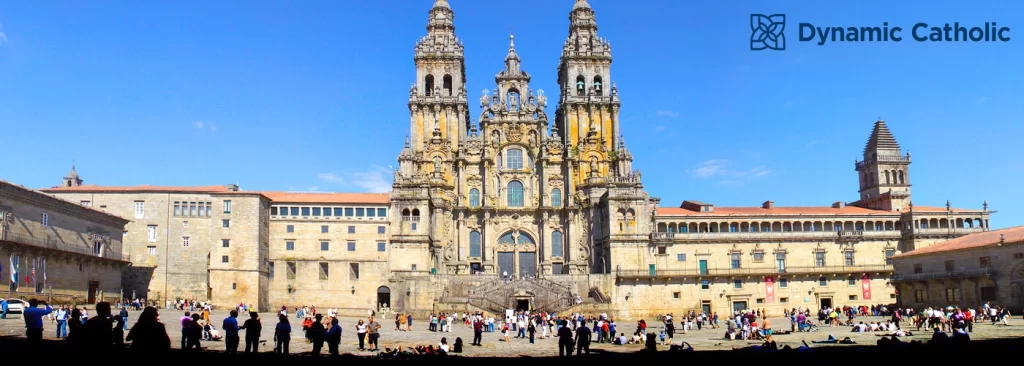
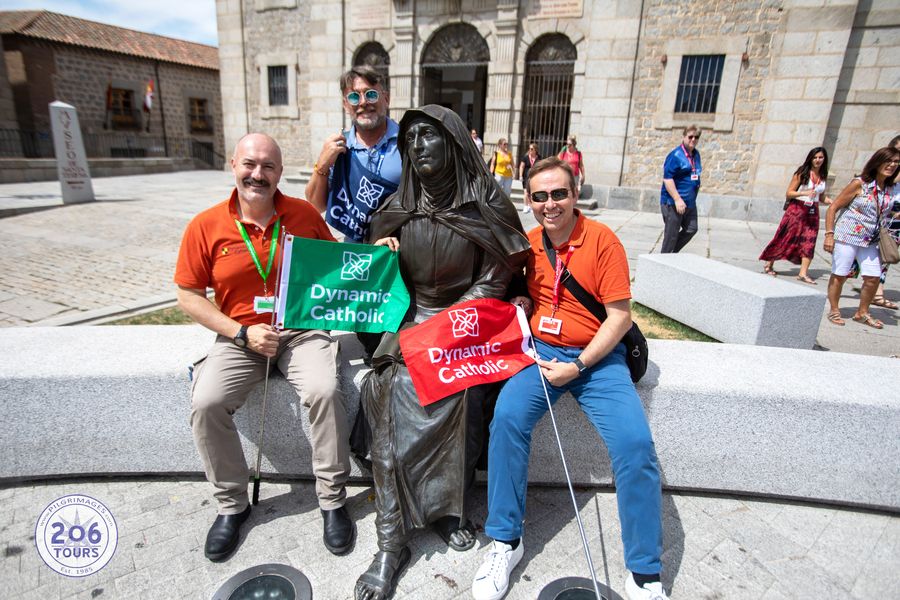 TIP: Make sure to wear your Dynamic Catholic Lanyard, Nametag, and Bag so that the tour escort can identify you.
TIP: Make sure to wear your Dynamic Catholic Lanyard, Nametag, and Bag so that the tour escort can identify you.